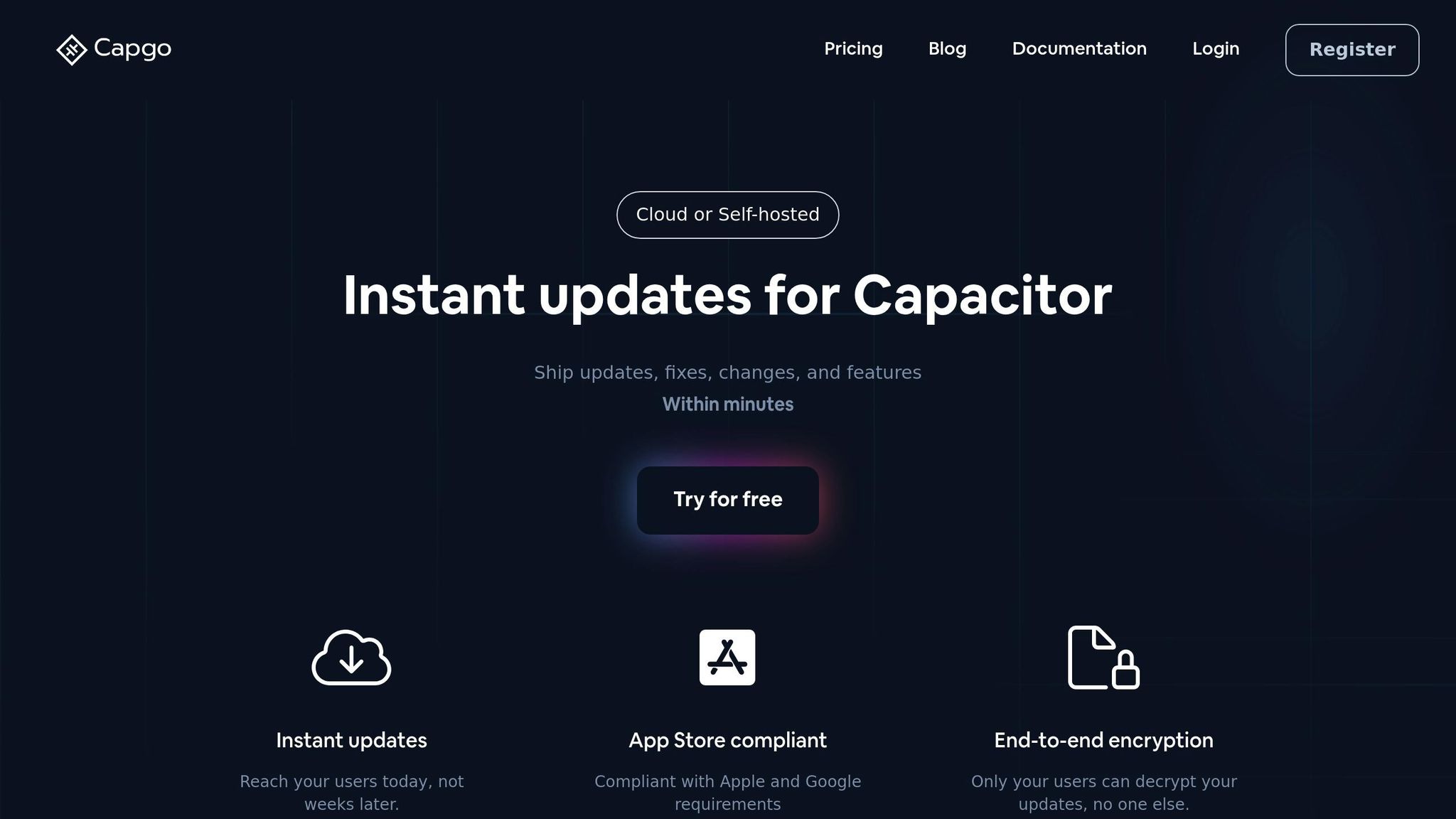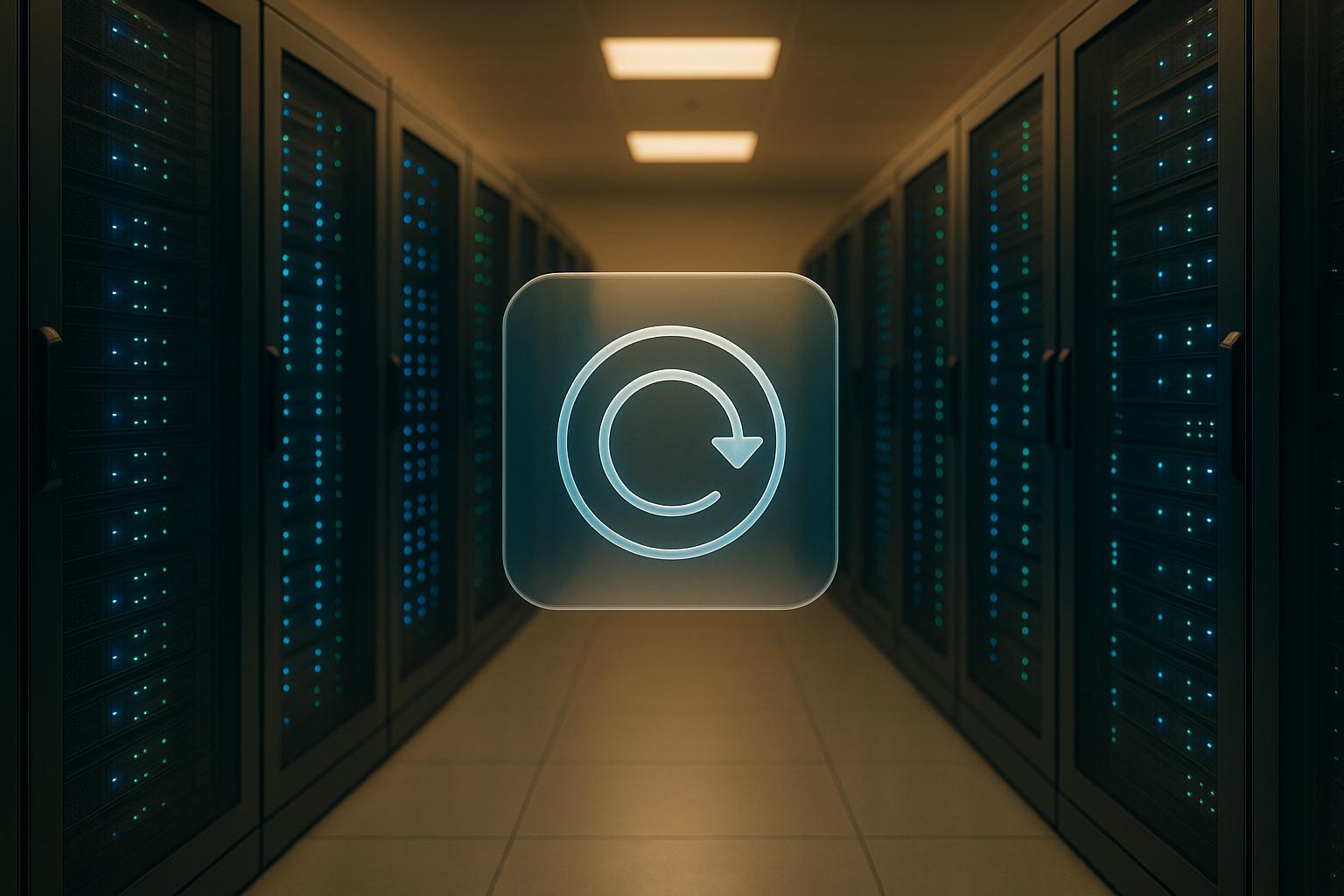Want to secure your CI/CD workflows? Start with refresh token rotation. This practice ensures that tokens are short-lived, reducing risks of stolen credentials and automating access management. Here’s why it matters:
- What it does: Refresh tokens replace old access tokens with new ones, invalidating the previous token after use.
- Why it’s important: Short-lived tokens limit exposure, detect threats faster, and reduce the chance of unauthorized access.
- How to implement it: Use tools like HashiCorp Vault or AWS Secrets Manager for secure token storage and rotation. Configure CI/CD platforms like GitHub Actions or GitLab CI to automate the process with scripts.
- Avoid downtime: Add a grace period, fallback mechanisms, and health checks to ensure smooth deployments.
- Follow standards: Use TLS encryption, track token usage, and align with NIST and SOC 2 guidelines.
Quick Tip: Platforms like Capgo simplify token rotation by automating the process, integrating encryption, and reducing costs compared to industry standards.
Token rotation is a simple yet effective way to secure your CI/CD pipelines. Keep reading to learn how to set it up and avoid common pitfalls.
GitLab 17.7 - Token Rotation via UI
Setting Up Token Rotation in CI/CD
Implementing refresh token rotation is a key step in securing CI/CD deployments.
Token Storage Methods
To keep your tokens secure, consider using advanced cloud-based solutions:
HashiCorp Vault Integration
- Use dynamic secrets that automatically rotate.
- Configure lease durations for temporary credentials.
- Enable audit logging to monitor token usage.
AWS Secrets Manager
- Set up automatic rotation schedules.
- Activate version tracking to manage credentials effectively.
- Enable cross-region replication for added redundancy.
Both methods ensure secure and automated deployments, reducing manual intervention.
CI/CD Platform Setup
Each CI/CD platform requires specific configurations to handle token rotation effectively:
GitHub Actions Setup:
name: Token Rotationon: schedule: - cron: '0 0 * * *' # Daily rotationenv: TOKEN_STORE: ${{ secrets.TOKEN_STORE }}
steps: - name: Rotate Token run: | curl -X POST $TOKEN_STORE/rotateGitLab CI/CD Configuration:
rotate_token: script: - rotate_credentials.sh rules: - changes: - credentials/*Adjust these examples to match your platform’s requirements and ensure seamless token rotation.
Preventing Deployment Interruptions
Token rotation can sometimes lead to deployment issues, but you can avoid downtime with these strategies:
- Grace Period Implementation: Allow a 15-minute overlap where both old and new tokens are valid. This ensures ongoing jobs finish without disruption while new ones start with updated credentials.
- Fallback Mechanism: Set up a backup authentication method to use if token rotation fails.
- Health Checks: Regularly verify token validity and rotation processes.
Example health check script:
#!/bin/bashcheck_token_validityif [ $? -eq 0 ]; then perform_rotation verify_new_tokenfiPlatforms like Capgo can simplify token lifecycle management, ensuring smooth operations without downtime.
Security Standards for Token Rotation
TLS and Encryption Setup
To ensure secure token exchanges, it’s critical to implement multi-layered encryption protocols. Start by configuring mutual TLS (mTLS) authentication between your CI/CD services and token management systems. Here’s an example of what a proper mTLS configuration might look like:
# Example mTLS Configurationtls: cert_file: /path/to/cert.pem key_file: /path/to/key.pem client_ca_file: /path/to/ca.pem min_version: TLS1.3 cipher_suites: - TLS_AES_128_GCM_SHA256 - TLS_AES_256_GCM_SHA384Capgo enhances token security with end-to-end (E2E) encryption, ensuring that tokens remain safeguarded throughout their lifecycle [1]. Alongside encryption, it’s essential to monitor token usage to confirm the effectiveness of these security measures.
Token Usage Tracking
Tracking how tokens are used is a proactive way to catch potential security issues. Metrics like rotation success rates can reveal vulnerabilities early, giving you the opportunity to address them before they escalate. This level of monitoring also ensures that your token management practices align with established security guidelines.
Meeting Security Standards
To meet modern security standards, follow these guidelines for token rotation:
NIST Recommendations:
- Use automatic token expiration to reduce exposure risks.
- Ensure tokens utilize strong key lengths (at least 2048 bits).
- Keep production and development tokens in separate storage systems.
- Set up automated monitoring to track token-related activities.
- Implement rollback mechanisms to recover from token-related errors.
- Apply role-based access controls (RBAC) to limit token access to authorized users.
SOC 2 Compliance:
- Maintain detailed documentation of token rotation procedures.
- Enable audit logging for all token operations to ensure traceability.
- Develop and enforce incident response procedures to address token-related security breaches.
Token Rotation for Large-Scale Systems
When token rotation encounters issues in complex CI/CD pipelines, it’s crucial to have a robust error recovery system in place. This ensures problems are identified quickly, resolved automatically where possible, or rolled back to a stable state. For large-scale systems, maintaining seamless operations requires a well-structured approach to error recovery.
Error Recovery Steps
Here’s an example of a configuration for handling errors during token rotation:
# Error Recovery Configurationerror_handling: monitoring: alert_threshold: 2 check_interval: 60s recovery: auto_rollback: true max_attempts: 3The recovery process typically involves these steps:
- Detect failures: Use automated monitoring tools to identify problems as soon as they occur.
- Pause dependent operations: Temporarily halt related processes to avoid a domino effect.
- Attempt recovery: Follow predefined recovery procedures to fix the issue automatically.
- Rollback if necessary: If recovery attempts fail, revert to the previous token state to restore stability.
“Error Tracking: Proactively monitor and fix issues before they impact users” - Capgo [1]
This structured approach minimizes downtime and ensures security standards are upheld. Monitoring systems oversee each step, allowing teams to act swiftly and effectively when token rotation issues arise.
Using Capgo for CI/CD Security

Capgo builds on proven token rotation strategies to strengthen CI/CD security, offering tools that make secure deployments both seamless and reliable.
Capgo Security Tools
At the core of Capgo’s security setup is end-to-end encryption, ensuring updates are accessible only to authorized users. This encryption framework integrates smoothly with popular CI/CD platforms, providing a secure foundation for deployments.
# Capgo Security Configurationsecurity: encryption: type: end-to-end key_rotation: enabled ci_integration: platforms: - GitHub Actions - GitLab CI - JenkinsCapgo Token Rotation Setup
Setting up token rotation with Capgo is straightforward, thanks to its CLI tool. After installing the Capgo plugin, configure your pipeline with features like a 24-hour rotation interval, backup options, and active monitoring. The system takes care of token updates automatically, ensuring deployments remain uninterrupted. This streamlined process highlights how Capgo simplifies security compared to other platforms.
Capgo vs Other Platforms
Since 2022, the CI/CD security landscape has seen significant advancements, and Capgo stands out for teams transitioning from older systems. Here’s how it compares:
| Feature | Capgo | Industry Standard |
|---|---|---|
| End-to-End Encryption | Yes | Varies |
| Self-Hosting Option | Available | Rare |
| Monthly Operating Cost | ~$300 | $500+ |
| Token Rotation Automation | Built-in | Limited |
“We are currently giving a try to @Capgo since Appcenter stopped live updates support on hybrid apps and @AppFlow is way too expensive.” - Simon Flack[1]
Capgo’s affordable OTA update plans starting at $12/month offer long-term savings, with an estimated $26,100 saved over five years[1]. For teams needing automated CI/CD to build native apps, an optional one-time setup service is available for $2,600. Its support for Capacitor 6 & 7, along with features for flexible organization management, makes it an excellent option for small teams and large enterprises alike, especially those prioritizing robust security measures.
Conclusion: Improving CI/CD with Token Rotation
Key Security Benefits
Token rotation simplifies credential management while enhancing threat detection capabilities.
Here are some of the main security benefits a well-executed token rotation strategy can bring:
| Improvement Area | Impact |
|---|---|
| Credential Exposure | Automated rotation reduces risks by eliminating the use of long-term secrets. |
| Breach Detection | Real-time tracking of token reuse allows for quicker identification of threats. |
| Access Control | Fine-tuned permissions help restrict unauthorized access effectively. |
These enhancements highlight why token rotation is a critical component for strengthening your CI/CD pipeline.
Steps to Implement Token Rotation
To successfully integrate token rotation into your workflow, focus on these essential areas:
Setting Up Infrastructure
- Use end-to-end TLS/SSL encryption to secure communication.
- Store tokens in secure vaults designed for sensitive credentials.
- Configure automated schedules to ensure tokens are rotated regularly.
Configuring Monitoring
- Keep a close eye on token activity by tracking usage patterns.
- Set up alerts for any unusual behavior, such as tokens being reused in unexpected ways.
- Log all token lifecycle events to maintain a detailed audit trail.
For a more streamlined process, tools like Capgo incorporate token rotation directly into CI/CD pipelines. When deploying this feature, ensure you implement robust error-handling mechanisms and thorough testing to avoid disruptions. This approach not only strengthens your security but also helps maintain smooth operations, creating a reliable foundation for secure, automated deployments.
FAQs
::: faq
What is refresh token rotation, and how does it improve security in CI/CD workflows?
Refresh token rotation is a security feature where a fresh refresh token is issued each time the previous one is used. This method helps reduce the risk of token misuse since any compromised token becomes invalid after being rotated.
In CI/CD workflows, using refresh token rotation adds an extra layer of protection for automated tasks like app updates or deployments. It limits the exposure of long-lasting tokens, strengthening the security of your pipeline. Tools such as Capgo can integrate smoothly into CI/CD systems, providing secure and automated updates for Capacitor apps while adhering to platform guidelines. :::
::: faq
How can I implement refresh token rotation in CI/CD pipelines to ensure secure and uninterrupted deployments?
Implementing refresh token rotation in your CI/CD pipelines is a smart move to keep your deployments secure while running smoothly. Here are some practical tips to get it right:
- Automate token rotation: Build token management directly into your CI/CD workflow. This way, tokens are refreshed automatically, eliminating the need for manual updates.
- Secure tokens with environment variables: Always store tokens in environment variables instead of hardcoding them into your scripts. This adds an extra layer of protection for sensitive information.
- Keep an eye on token activity: Regularly monitor and log token usage. This helps you spot any misuse or unauthorized access quickly.
If you’re developing with Capacitor apps, Capgo simplifies CI/CD integration. It ensures managing live app updates is both secure and efficient. Pairing token rotation with tools like Capgo can make your deployment process safer and more streamlined. :::
::: faq
How does Capgo ensure secure token rotation and CI/CD integration while remaining cost-effective compared to industry standards?
Capgo provides a secure and efficient way to handle token rotation and integrate CI/CD workflows, aligning with industry standards while emphasizing automation. By weaving refresh token rotation into CI/CD processes, Capgo ensures developers can keep app updates secure without compromising on ease of use.
When it comes to cost and features, Capgo stands out as a strong contender. It offers key functionalities like end-to-end encryption, smooth CI/CD integration, and real-time updates, all while meeting Apple and Android compliance guidelines. On top of that, Capgo’s pricing is designed to be budget-friendly, making it an appealing option for developers looking for a dependable and secure live update solution for Capacitor apps. :::




